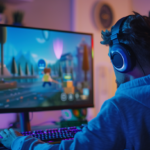Table of Contents
ToggleUnraveling the Mystery: How to Play Mafia
Mafia is a classic party game that has entertained groups of all sizes and ages for decades. It’s a game of strategy, deception, and deduction that keeps players on the edge of their seats until the very end. Whether you’re playing with friends, family, or colleagues, Mafia promises an evening filled with suspense and intrigue. In this article, we’ll explore how to play Mafia, how to adapt the game for children, and how to incorporate it into classroom settings.
Setup
- Gather Players: Mafia is best played with a group of at least 6-8 players, although it can accommodate larger groups as well.
- Assign Roles: Players are assigned roles randomly. The typical roles include:
- Mafia: A small group of players who know each other’s identities and work together to eliminate the other players.
- Innocents (or Villagers): The majority of players, who are unaware of each other’s identities. Their goal is to identify and eliminate the Mafia.
- Special Roles (optional): Depending on the variation, additional roles such as Detective, Doctor, or Serial Killer may be included.
- Secretly Distribute Role Cards: Each player receives a card indicating their role. Mafia members will know who their teammates are, while the Innocents remain oblivious.
Gameplay
- Day Phase: The game alternates between day and night phases. During the day, all players deliberate and vote on who they believe is a member of the Mafia. Discussion is open, and players try to convince others of their innocence or guilt.
- Vote: After discussion, players vote on who to eliminate from the game. The player with the most votes is “lynched” and reveals their role.
- Night Phase: At night, the Mafia members secretly choose a player to eliminate. Special roles may also take action during this phase, such as the Detective investigating a player’s identity or the Doctor protecting someone from elimination.
- Reveal and Repeat: The cycle of day and night continues until either all Mafia members are eliminated (Innocents win) or the Mafia outnumber the remaining players (Mafia win).
Strategy
- Observation: Pay close attention to players’ behavior and voting patterns. Suspicious actions may indicate Mafia membership.
- Deception: If you’re part of the Mafia, bluff and manipulate to sow doubt among the Innocents. Conversely, if you’re an Innocent, defend yourself convincingly to avoid being wrongly accused.
- Collaboration: Work with other players to form alliances and identify potential Mafia members. But be wary of trusting everyone, as the Mafia may try to deceive you.
Playing Mafia with Kids
Adapting Mafia for children requires simplifying the rules and themes while maintaining the essence of the game. Here’s how to play Mafia with kids:
Simplified Rules
- Roles: Simplify the roles to just Mafia and Innocents. Remove any special roles involving complex abilities.
- Discussion: Encourage open discussion but provide guidance to ensure it remains appropriate for children.
- Emphasis on Fun: Focus on the social aspect and excitement of uncovering the Mafia rather than intense strategy.
Themes and Atmosphere
- Friendly Setting: Create a welcoming environment where children feel comfortable participating without feeling overwhelmed.
- Visual Aids: Use colorful cards or character tokens to represent roles, making it easier for kids to understand.
Supervision
- Moderation: Assign an adult to moderate the game and ensure that interactions remain positive and respectful.
- Guidance: Provide guidance on sportsmanship and fair play, emphasizing the importance of honesty and teamwork.
Playing Mafia in the Classroom
Mafia can also be adapted for educational purposes in classroom settings, promoting critical thinking and communication skills among students.
Educational Objectives
- Analytical Thinking: Encourage students to analyze evidence and make informed decisions based on logical reasoning.
- Persuasive Communication: Develop students’ ability to express their opinions persuasively and respond to counterarguments.
- Collaboration: Foster teamwork and cooperation as students work together to uncover the Mafia.
Classroom Adaptations
- Integration with Curriculum: Align Mafia gameplay with lesson objectives, such as by incorporating themes related to literature, history, or social studies.
- Reflection and Discussion: Facilitate post-game discussions where students reflect on their strategies and decision-making processes.
- Variations: Modify the game mechanics to suit classroom dynamics, such as by adjusting the duration of each phase or introducing additional rules to enhance learning outcomes.
Ethics and Values
- Ethical Considerations: Use the game as an opportunity to discuss ethical dilemmas and moral decision-making, such as the importance of truthfulness and integrity.
- Respectful Discourse: Establish ground rules for respectful communication and active listening to ensure that discussions remain constructive and inclusive.
How to play Mafia without cards
Setup
- Assign Roles Verbally: Instead of distributing physical cards, players are verbally assigned roles by a moderator. The moderator can either announce each player’s role publicly or whisper it to them privately.
- Remember Your Role: Players must remember their assigned roles without the aid of visual cues. This adds an extra layer of challenge and requires keen attention during gameplay.
Gameplay
- Day Phase: The game follows the same alternating day and night phases as the standard version. During the day, players engage in open discussion to identify and vote on suspected Mafia members.
- Vote: After discussion, players vote verbally on who to eliminate from the game. The moderator tallies the votes and announces the player with the most votes.
- Night Phase: During the night, the moderator guides the actions of the Mafia and any special roles. Players must remember their roles and act accordingly without physical prompts.
- Reveal and Repeat: The game continues with successive rounds of discussion, voting, and nighttime actions until one faction achieves its win condition.
Adaptations and Tips
- Clear Communication: Encourage players to communicate their actions and suspicions clearly, as there are no visual cues to rely on.
- Moderator Guidance: The moderator plays a crucial role in maintaining the flow of the game and ensuring that players adhere to the rules.
- Memory Skills: Playing Mafia without cards can challenge players’ memory skills, making it a fun exercise in mental agility.
- Use of Props: While not essential, you can incorporate props or hand gestures to represent roles if desired, adding a visual element to the game without the need for cards.
Benefits of Playing without Cards
- Accessibility: Playing without cards makes Mafia more accessible, as it eliminates the need for physical components and allows for impromptu gameplay in any setting.
- Flexibility: This version of the game can be adapted to various group sizes and environments without requiring specialized equipment.
- Enhanced Focus: Players must rely on their verbal communication and memory skills, fostering greater engagement and focus during gameplay.
By embracing the challenge of playing Mafia without cards, players can enjoy the thrill of strategy and deception in a streamlined and accessible format. Whether you’re gathered with friends, family, or colleagues, this version of the game promises hours of entertainment and excitement.
Conclusion
Mafia is a versatile game that can be enjoyed by players of all ages and adapted to various settings, from casual gatherings to educational environments. By following the basic rules and principles of the game while making appropriate adjustments for the intended audience, you can create memorable experiences filled with suspense, strategy, and social interaction. Whether you’re playing with friends, family, or students, Mafia promises hours of entertainment and opportunities for learning and personal growth.






